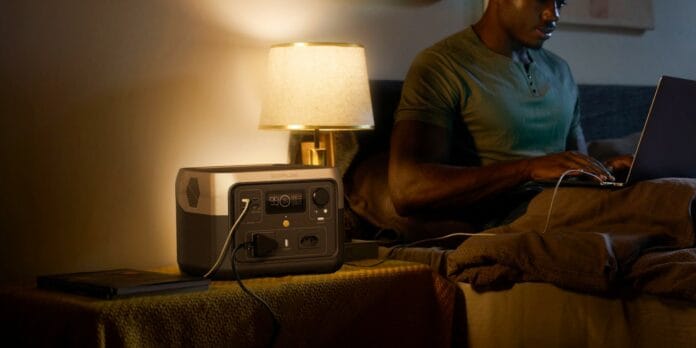Table of Contents
Load-shedding leaves households in the dark and businesses scrambling to keep the lights on, but load-shedding bulbs can provide critical illumination during regular and necessary power outages.
Are they worth the investment? Learn what load-shedding bulbs and globes are, how they work, and whether they truly offer value for your money.
What Are Load Shedding Bulbs?
Load-shedding bulbs are specialised light bulbs designed to remain lit during power outages, especially in communities prone to load shedding, like South Africa. They come with built-in rechargeable batteries that automatically turn on when the power goes out, providing an instant light source. These bulbs look and function like regular light bulbs but have the added advantage of backup power.
Load-shedding bulbs look and act the same as standard LED bulbs when connected to the grid, but you can’t see that these bulbs are simultaneously charging their hidden internal batteries. Then, if a load-shedding outage impacts your home, these special bulbs will immediately trigger a switch to the reserved battery power to minimise interruptions and keep your space lit.
Load-shedding light bulbs don’t require any additional wiring or complex installation – just screw them into your light fixtures as usual. Their plug-and-play nature makes them a simple backup power option for people who don’t want to invest in more robust solutions but still want added reassurance of light during frequent load-shedding blackouts. With many South African residents facing power grid instabilities, load-shedding bulbs can be a saving grace.
What About Load Shedding Globes?
Load-shedding globes are essentially the same as load-shedding bulbs, but people may use one term or another based on their regional vocabulary. When someone refers to load-shedding globes, they may also be talking about a bulb that’s much wider and more spherical than a standard light bulb.
Still, either of these terms can appropriately describe bulbs with built-in batteries that can provide backup power for continued lighting, even during outages.
How Does a Load-Shedding Globe Work?
When connected to grid power, a load-shedding globe will work like a regular light bulb while charging its internal battery as full as possible. Once that battery has full power, it’ll continue providing light while protecting its saved battery power. If your home loses power due to load shedding, the globe will automatically begin drawing power from its battery for a seamless transition that allows you to avoid total darkness.
Do Load-Shedding Light Bulbs Really Save Money?
Load-shedding bulbs can help you maintain light when the power goes out, but can they help you save money? In the long run, you may save money by buying fewer candles, flashlights, or other temporary lighting solutions. Their added light could also help you avoid accidents and injuries that happen in the dark, saving money that could be spent on medical bills.
How Long Do Load Shedding Bulbs Last?
There are two ways to consider how long load-shedding bulbs last: battery life and product lifespan. Battery life describes how long each bulb’s full charge will last when not connected to grid electricity, while product lifespan refers to how many years they’ll continue to work.
Battery life depends on the specific bulb you’re using, but most can last anywhere from two to eight hours. The time it takes to recharge also impacts how long it lasts, so if you’re not getting ample time between load-shedding interruptions, it may not be able to fully recharge and leave you with limited power time if it goes out again.
Lifespan, on the other hand, depends on the manufacturer, brand, and model. You also may find that more expensive bulbs promise a longer lifespan.
What to Consider When Choosing Load-Shedding Bulbs
Ensure you choose the load-shedding bulbs that will work best for you in the face of frequent outages. Here’s what to keep in mind and what can set a great backup bulb apart from the rest.
Battery Life
The duration of emergency lighting provided by load-shedding bulbs is crucial. Look for bulbs that offer at least 2-4 hours of backup power, though some high-capacity models can last up to 24 hours or more. Consider your typical power outage duration (and what load-shedding stage you usually experience) and choose accordingly. Remember that using lower brightness settings can often extend battery life.
Also, keep in mind how long it takes to charge the battery fully. Batteries with a longer life usually take longer to recharge. Focus on finding the right balance of charging vs. use time.
If you need something to keep your lights on for longer during extended outages, consider other options beyond load-shedding bulbs, such as home backup power from EcoFlow Solar Generators.The EcoFlow RIVER 2 230 Portable Power Station is a compact and versatile solution, offering 230Wh capacity and 300W output, making it perfect for powering essential devices such as lights, laptops, and small appliances during outages. Its X-Boost technology enables it to support devices up to 600W, ensuring compatibility with a wide range of equipment.
For larger energy needs, the EcoFlow RIVER 2 Portable Power Station offers a 256Wh capacity and 300W output, making it an excellent choice for households and small businesses looking to reduce their reliance on the grid. Both models can be recharged via AC input, solar panels, or car outlets, providing flexible charging options even during power outages.

Cost
Load-shedding bulbs cost more than your run-of-the-mill LED light bulb, but they provide critical illumination when the lights go out, so the price increase is justified. Compare what you’ll pay at checkout to the benefits you’ll enjoy for years to come once they’re installed.
Brightness
Check the brightness of the bulbs in both standard and emergency modes. Many load-shedding bulbs reduce their output in emergency mode to conserve energy and ensure the light can last as long as possible. Ensure the emergency mode brightness meets your needs because it will likely dim slightly.
Watts
Lower wattage means less power used, which can be particularly beneficial when running on battery power. It’s also good to know if you plan to power these bulbs using a portable power station or solar generator because you can ensure the total wattage required doesn’t exceed the backup’s output.
Cool vs. Warm Light
When choosing any light bulb, consider what colour temperature you prefer for your home or business lighting. Warm light (2700-3000K) creates a cosy, relaxing atmosphere, ideal for living spaces and bedrooms. Cool light (5000-6500K) provides a brighter, more energising illumination, suitable for task-oriented areas. Some bulbs may even offer adjustable colour temperatures, so you can switch from cool to warm as needed.
Final Thoughts
Load-shedding bulbs and globes are a small and sneaky way to reclaim your access to power and light, even during regular outages. With no complicated installation or maintenance, they function and look like regular light bulbs until you lose power. Then, they immediately get to work, switching to pull power from the reserved energy they saved while connected to the grid.
While the initial investment is higher than that of a standard light bulb, the long-term benefits make it worthwhile. Invest in smart solutions like load-shedding bulbs or EcoFlow’s Solar Generators to claim energy independence. These reliable, eco-friendly energy solutions provide peace of mind during power failures.
